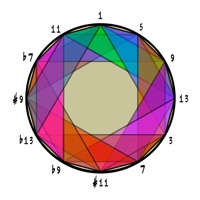
It is widely used by many kinds of organizations such as theaters, museums, operas, orchestras, dance centers and more.
Tessitura pro android software#
Tessitura is a software for arts & culture that combines CRM and ticketing system along with marketing and fundraising tools. This process is the same for both the contemporary singer and the musical theatre singer.Photo by Peter Lewicki on Unsplash What is Tessitura Other songs will be more focused within a small part of the range.įind the basic tessitura of the verse, then the chorus, and the bridge (if there is one) by finding where the notes concentrate.īy seeing where the concentration of the notes lies in the music structure, you can make a more informed decision on song choice and what you need to work on. Some songs will have a more balanced, wider tessitura, with the notes being spread more evenly over the range. You want to find where most of the notes lie within a song. This way, you'll analyze music quickly to see where the voice pitch trouble spots are and if the tessitura is particularly difficult. This is why in a piece of sheet music, it's handy to identify the lowest notes to the highest notes on the music staff and have a basic knowledge of where vocal bridges occur in the musical piece. Again, basic music knowledge and understanding of vocal registers will be helpful for this.

Still, they will choose songs in an ideal tessitura for their tone of voice types or natural range.ĭetermining a song's tessitura can be a bit trickier than finding the overall vocal range as you need to examine the song closer. Likewise, untrained singers or even intermediate voice types who may have a limited range would still sing in a certain tessitura. Mariah Carey would sing in her whistle register, but only for a moment in the song in these upper extremes, the rest of the time she would be singing in a more common range for her distinctive voice quality.ĭeep voices or bass range voices such as Johnny Cash, would still use the same principle when choosing songs or writing songs for their voice profile.


But they would still choose songs where most of their notes would be in a certain tessitura. Here is another example of female voice tessitura Pop singers Mariah Carey and Whitney Houston had ease in singing and large vocal ranges at the peaks of their careers. Still, if these notes are consistently sung outside of the tessitura of their voice, the singer is likely to encounter problems such as recognizable register break, vocal fatigue, and if sung with poor technique for a long time, possible vocal damage down the road. Isolated notes that are sung infrequently in a song outside of the comfortable range of the singer are less likely to cause a problem. Therefore, if this note is sung too heavy or with too much of the lower voice or chest register in it, the singer will quickly fatigue while singing these music phrases. In fact, Bb4 can be prone to pulling up chest voice (using too much of the lower register coordination).

Its constant repetition where the voice transitions make this song a tough slog if the singer has not yet learned to balance this area or bridge location. This Bb4 sits right in the middle of the vocal bridge or mix voice area and can be a trouble spot (where the voice is likely to crack). The chorus's vocal tessitura centers largely on Bb4 you will sing this note over twenty times on each chorus! If this note is not strong, the listener will definitely be made aware. Therefore, if the sung note is not that strong, the listener may or may not pick up on it. However, you only hit the note twice in each chorus. The highest note, D5, is at the top of the singer's transition (the area between the chest and head voice) and can be daunting for the singer. Tessitura (Italian for "texture) refers to where most of the vocal line or notes lie in a song.įor example, the chorus of Katy Perry's “Teenage Dream” has a vocal range of G4 to D5, which is just over a half-octave and is not extremely large. Think of the difference between how high a ladder is (vocal range) versus which step(s) you will spend most of your time standing on (tessitura).


 0 kommentar(er)
0 kommentar(er)
